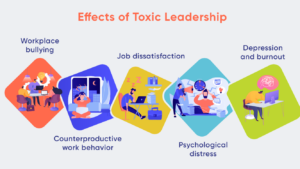by Krishna Chodipilli | Jan 5, 2024 | Leadership And Management
Introduction
In exploring the impact of attachment styles on leadership effectiveness, we turn our attention to the Avoidant Attachment style. This style is defined by a pronounced self-reliance and emotional detachment, presenting unique challenges in team dynamics and leadership facilitation. Drawing from Mikulincer and Florian’s 1995 study, “Appraisal of and Coping with a Real-Life Stressful Situation: The Contribution of Attachment Styles,” we find that leaders with an avoidant attachment tend to adopt distinct strategies for stress management and problem-solving. These strategies significantly influence their approach to team management, highlighting the intricate link between attachment styles and leadership efficacy.
Understanding Avoidant Attachment in Leadership

Leaders with an Avoidant Attachment style often exhibit high independence and prefer solitary problem-solving. While this can lead to efficient decision-making, it may also create barriers to deep emotional connections with team members, impacting team spirit. Let’s delve deeper into this:
Strengths:
- Independent and decisive: Avoidant leaders are comfortable making decisions on their own and taking initiative. This can be advantageous in fast-paced environments where quick action is needed.
- Focus on efficiency: They prioritize getting things done and often excel at streamlining processes and minimizing wasted time.
- Self-reliant and resourceful: They rarely seek help or validation, preferring to handle challenges themselves. This can make them reliable and dependable under pressure.
Challenges:
- Emotional distance: Avoidant leaders may struggle to connect with their team members on a deeper level. Their focus on tasks and goals can leave them less attuned to individual needs and emotions.
- Lack of collaboration: Their preference for solo work can hinder teamwork and brainstorming. This can lead to missed opportunities for diverse perspectives and creative solutions.
- Difficulty with feedback: They may need constructive criticism and help to give it effectively themselves. This can create a culture of fear or hesitation to speak up, hindering improvement. .
The Individual Impact
The behaviour of an avoidant leader can significantly impact individual team members. Team members may feel like they are just cogs in the machine, leading to decreased motivation and engagement. Misunderstandings and resentment can fester, damaging team spirit and productivity. All this can lead to a sense of alienation within the team.
Strategies for Leaders with Avoidant Attachment

While avoidant attachment styles present challenges, it’s important to remember that individuals can learn and grow (Maslyn, Schyns, & Farmer, 2017). Here are some ways to bridge the gap between avoidant leaders and their teams:
- Encourage Open Communication: Creating channels for open dialogue can foster inclusivity. Actively listen and address concerns with empathy.
- Participate in Team Activities: Team-building exercises can help lessen emotional distance. Celebrate successes together to build rapport and trust.
- Seek Feedback: Regular feedback sessions provide insights into the team’s needs and perceptions. This fosters a more understanding and supportive work environment.
Case Study: Bridging the Gap – Jordan’s Transformation
Jordan, known for her avoidant attachment style, faced challenges in team cohesion and engagement. She often made decisions independently, leading her team to feel disconnected. By consciously adopting strategies like inclusive meetings and actively seeking team feedback, Jordan began to bridge the emotional gap. The result was a noticeable improvement in team involvement and a more collaborative work environment.
Conclusion: Toward Inclusive Leadership
Avoidant leaders who implement tactics encouraging inclusivity and emotional connection can significantly improve their facilitation skills.
Embracing a supportive team atmosphere and realising the importance of teamwork are essential milestones in this process.
Join us at Leadership Tribe to explore Avoidant Attachment and other leadership styles. Please share your experiences and insights to enrich our collective understanding.
Our next article will explore the complexities of the Fearful-Avoidant Attachment style in leadership, examining its unique challenges and strategies for effective navigation.
References:
Mikulincer, M., & Florian, V., 1995. Appraisal of and Coping with a Real-Life Stressful Situation: The Contribution of Attachment Styles. Personality and Social Psychology Bulletin, 21, pp. 406 – 414.
Maslyn, J., Schyns, B., & Farmer, S., 2017. Attachment style and leader-member exchange: The role of effort to build high-quality relationships. Leadership & Organization Development Journal, 38, pp. 450-462.
by Krishna Chodipilli | Jan 3, 2024 | Agile Training
“Change is hard at first, messy in the middle, and gorgeous at the end.” These words, spoken by motivational speaker Robin Sharma, perfectly encapsulate the journey of adopting Agile methodologies – a path not just towards business transformation, but also personal growth.
As a professional involved in Agile transformations for businesses globally, I’ve experienced firsthand how Agile is not just a method for managing projects but a philosophy that can lead to personal enlightenment. It provides a framework for individuals to navigate uncertainty, embrace change, and continuously improve themselves.
Understanding Agile and Its Impact on the Individual
The Agile methodology, traditionally applied to software development, has now permeated various sectors, from marketing to HR and beyond. At its core, Agile emphasizes adaptability, collaboration, and continuous improvement. It encourages individuals to break their work into small, manageable chunks (or “Sprints”), giving them a clear focus and a sense of accomplishment with each completed task.
But how does this translate to personal growth? Let’s explore the key aspects of Agile and its impact on individuals:
1. Self-awareness
The Agile approach encourages individuals to engage in regular reflection and seek feedback, which ultimately enhances their self-awareness. By participating in practices like retrospectives, individuals can evaluate their strengths and weaknesses, identify areas for growth, and create action plans to further develop themselves. This self-awareness plays a pivotal role in understanding one’s own abilities, limitations, and goals.
2. Resilience
One of the fundamental principles of Agile is embracing change instead of fearing it. Agile methodologies encourage individuals to adapt to shifting circumstances, adjust their plans, and learn from failures. This resilience built through navigating uncertain situations is a valuable life skill. It enables individuals to bounce back from setbacks, embrace new challenges, and thrive in an ever-changing world.
3. Collaboration and Communication
Agile places a high value on working together and communicating effectively. Agile teams collaborate closely, share knowledge, and leverage diverse perspectives to solve complex problems. These skills are not just critical in a professional setting but also in personal relationships. By adopting Agile principles in personal interactions, individuals can foster stronger connections, resolve conflicts more effectively, and build healthier relationships.
Achieve Your Ultimate Life Goals, One Sprint at a Time
Think of your life goals as complex projects. By breaking them down into smaller, achievable tasks or “sprints,” you can make them less intimidating and more manageable. These tasks could involve learning a new skill, improving your health, or building better relationships. For instance, let’s say your goal is to write a novel. Instead of feeling overwhelmed by the enormity of the task, using an Agile approach allows you to break it down into smaller steps or sprints: writing a chapter, developing a character, researching a specific topic.
By adopting Agile principles in pursuing your life goals, you not only gain clarity and focus but also cultivate a sense of progress and achievement along the way. This iterative approach allows for regular course correction, learning from mistakes, and adapting to new insights as you work towards your ultimate objectives.
Real Life Examples: Agile for Personal Growth
The application of Agile principles for personal growth is not limited to theory. Numerous real-life examples demonstrate how individuals have leveraged Agile methodologies to achieve personal transformation. Let’s explore a few case studies:
1. Personal Development
Tom, a project manager, used Agile methodologies to improve his personal development. He recognized the need for growth in his communication skills, leadership abilities, and overall confidence. Tom started by identifying specific areas for improvement, creating a backlog of tasks, and regularly reassessing his progress. By applying Agile principles to his personal life, Tom achieved significant growth in his identified areas and became a more effective leader and communicator.
2. Health and Fitness
Sarah, a busy professional, struggled to find time for exercise and maintaining a healthy lifestyle. By applying Agile principles, she divided her health and fitness goals into small, manageable Sprints. Sarah incorporated exercise into her daily routine, planned nutritious meals, and tracked her progress effectively. This iterative approach allowed her to make consistent progress, adapt her strategies based on feedback, and build healthier habits that she could sustain long-term.
3. Learning a New Skill
Maria, a software engineer, adopted Agile methodologies to learn a new programming language. She broke down her goal into smaller tasks – studying syntax, practicing problems, building small projects – and achieved her goal in record time. By utilizing Agile principles such as iterative learning and continuous improvement, Maria accelerated her learning process, gained proficiency in the new programming language, and expanded her career opportunities.
4. Relationship Building
Mike, a sales professional, applied Agile principles to improve his networking and relationship-building skills. He set specific relationship-building goals, such as attending networking events, scheduling regular coffee meetings, and actively engaging with his professional network. By breaking down his goals into manageable tasks and continuously evaluating his progress, Mike built a strong network of connections, enhanced his professional relationships, and opened new doors for career growth.
5. Time Management
Emily, a student, struggled with managing her time effectively and meeting deadlines. By adopting Agile principles, she started using techniques such as timeboxing and prioritizing tasks based on their importance and urgency. This approach helped Emily become more organized, focused, and productive, resulting in better academic performance and reduced stress levels.
These case studies demonstrate how Agile principles can be applied to various aspects of personal growth, enabling individuals to overcome challenges, stay on track, and achieve their desired outcomes.
The Path to the Authentic Self
In conclusion, Agile is not just a business methodology, but a philosophy that can help individuals become their best selves. By embracing Agile principles, we can break our life goals into manageable tasks, foster self-awareness, build resilience, and improve our interpersonal skills. Agile provides a structured approach to personal growth, enabling individuals to navigate uncertainty, adapt to change, and continuously learn and improve.
So, why not take the first step on this journey to personal growth? Schedule a free consultation with Leadership Tribe today and learn how you can apply Agile methodologies to achieve your ultimate life goals. Remember, change may be hard and messy at the beginning, but it is always gorgeous at the end. Embrace Agile, and embark on the path to your authentic self.













